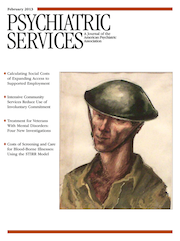Prevalence of Mental Health and Behavioral Problems Among Adolescents in Institutional Care in Jordan
Abstract
Objectives:
This study aimed to establish the prevalence rates of mental health and behavioral problems of Arab youths residing in Jordanian care centers due to family disintegration, maltreatment, or abandonment and to examine how functioning varies by child characteristics and placement history.
Methods:
Child Behavior Checklist and case history data were collected for 70 youths across four Jordanian care centers.
Results:
Approximately 53% of the adolescents were identified as experiencing mental health problems, and 43% and 46% had high internalizing and externalizing scores, respectively. Ordinary least-squares regression models examining mental health functioning showed that male gender, care entry because of maltreatment, time in care, and transfers were the most significant predictors of problems.
Conclusions:
Paralleling international research, this study found high levels of mental health needs among institutionalized youths. The impact of transfers on functioning is particularly worrisome, given the standard practice of transferring youths to another facility when they reach age 12. Improving the institutional care model by requiring fewer transfers and offering family-based community alternatives may ameliorate risks of developing mental and behavioral problems.



